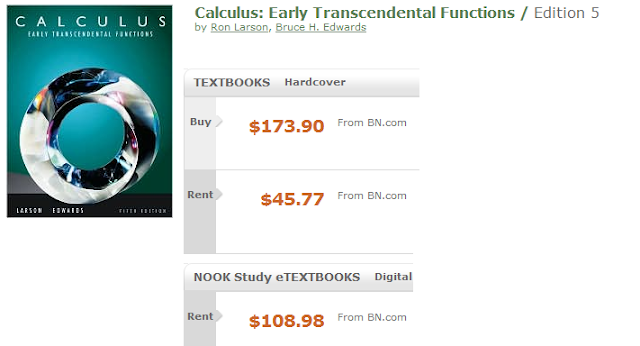Once upon a time, some executives in the upper echelon of their companies collaborated to eliminate competition among e book sellers. The target company was Amazon.com. Why Amazon, you might ask? Well, Amazon.com is the marketer of the KINDLE e book readers. Customers were bewildered by the high price of e books in proportion to hardback books. Amazon.com cut the prices of bestselling novels to $9.99, taking a loss for the price of best sellers and other e books; the KINDLE started flying off of the shelves. The exception that executives wanted to remove is the fact that $9.99 was substantially below their hardcover prices. Chronologically speaking, it wasn’t that long ago that Amazon effectively built a monopoly on e book sales and e reader sales. Obviously, the competition was “ooooohhh aaaahhhhhhh.”
Amazon's market share: 60 - 90 %
Barnes & Noble's Nook market share: 25 %
iBookstore market share: 10 % - 15 %
“According to federal court papers, the settlement agreement with three publishers said that for two years they will not restrict, limit or impede an e-book retailer's ability to set, alter or reduce the retail price of any electronic book ( http://www.msnbc.msn.com/id/47017081 ; Pete Yost)."
Wide spread complaints were from: Texas, Connecticut, Alaska, Arizona, Colorado, Illinois, Iowa, Maryland, Missouri, Ohio, Pennsylvania, South Dakota, Tennessee, Vermont and West Virginia. Puerto Rico also joined the lawsuit, which was filed in federal court in Austin, Texas.
Why are e books costing so much? Look at the example above.
Well, paper doesn't cost very much. We set it in our consumer minds that because a product isn’t heavy, it is cheap. The logic will confide that an e book should cost very little or next to nothing because there is no paper, printing, and shipping involved. Not so, company publisher's costs come from expenses that still exist in an e book world: Author advances, design, marketing, publicity, office space, and staff.What was really happening with the price fluctuation was the e book marketplace competition that publishers wanted began to take place. In order to set the $9.99 price, Amazon.com had to lose money. Gaining a strong customer base along with a huge percentage of the overall market was more important to the retail giant. Rather than competing on price, e book sellers like Apple, Barnes & Noble, Amazon, and others have, up until now, mainly been competing on user experience. The companies want us to have a relatively great reading experience. Despite the poplarity of the e book experience, we are still a hardcover world.
Ebook companies could decide on a means of plotting a solution to a two-variable problem on a graph in order to solve the small linear programming problem. The first step is to the goal: maximize profit via objective function. The two constraints mildly limit the degree to which the objective can be accomplished. There are plenty of alternative courses of action in this product-mix problem, though.
No need, now. The government is now telling us that the e books are inevitably going to be set at a low price, anyway.
No need, now. The government is now telling us that the e books are inevitably going to be set at a low price, anyway.
“Barnes and Noble and Amazon continue to duke it out in the e-reader market. Barnes and Noble currently offers over 2.5 million digital books, magazines and newspapers for its Nook devices. (ABC News; JOANNA STERN (@joannastern) April 12, 2012)"




